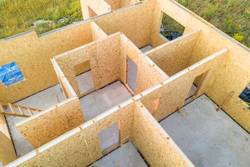Prefabricated Volumetric Building Systems Market To Be One Of The Sectors To See Upturn From The Covid-19 Pandemic
 While the outlook for many sectors has not been great through the Covid-19 Pandemic, AMA Research have forecasted that the Prefabricated Volumetric Systems Market is one that has the potential to grow as a result.
While the outlook for many sectors has not been great through the Covid-19 Pandemic, AMA Research have forecasted that the Prefabricated Volumetric Systems Market is one that has the potential to grow as a result.
Alex Blagden, Editor at AMA Research comments “The outlook for the volumetric building systems market remains difficult to predict given the lack of published data in this sector and the continued uncertainty, not only the construction sector but also the wider UK economy. Steady growth in this market is expected over the next few years to 2024, underpinned by the increasing use of off-site construction methods to help meet the chronic housing shortage and cope with the lack of traditional construction skills”.
Much of the growth in 2019 has been due to strong demand for site accommodation and other temporary units. This has been supported by increasing levels of road building and maintenance activity, a buoyant railway construction sector, the Hinkley Point C nuclear power plant programme, other infrastructure projects and housebuilding.
In 2020, however, the market for volumetric building systems is expected to fall sharply due to the impact of Covid-19 on construction activity across all sectors, with the exception of healthcare and infrastructure. Because these two have been less impacted than other end-use sectors, it is assumed demand for volumetric units here will partly offset the downturn elsewhere.
Once the Covid-19 pandemic is over, there are several factors that are expected to underpin a return to growth. These include an increasing number of public sector procurement frameworks, that include systems suppliers and an increase in the use of Building Information Modelling. There is also now a probability of an increase in the use of volumetric systems, and other types of offsite technologies, as a solution to the chronic shortage of affordable housing and also the ongoing shortage of skilled building tradesmen.
























































